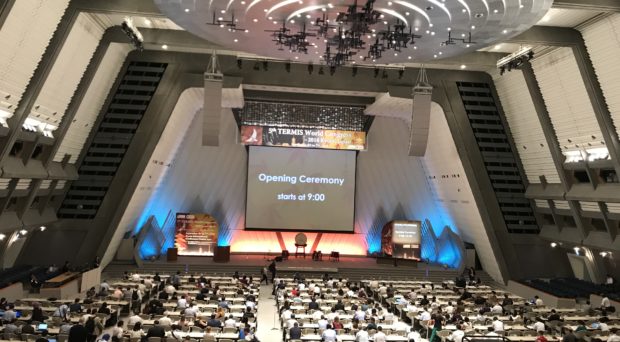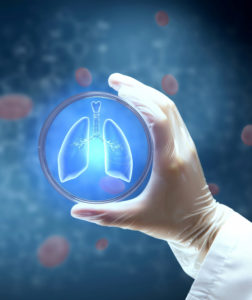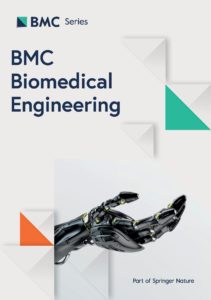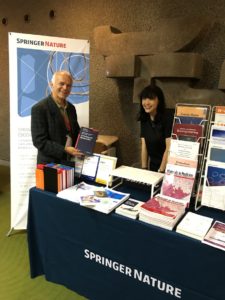
TERMIS 2018 took place during early September in the beautiful city of Kyoto, Japan, a place with a staggering collection of 1,600 temples, filled with UNESCO World Heritage sites and a history of more than 1,000 years.
The meeting kicked off with the arrival of typhoon Jebi and despite the hindering conditions, the organizers, led by the Conference Chairs, Prof Yasuhiko Tabata and Prof Yoshiki Sawa (also the President of the Japanese Society for Regenerative Medicine) in an admirable effort, ensured that all of the sessions went ahead uninterrupted, in what resulted to be an outstanding venue for ideas exchange and productive debate around the field’s highest accomplishments.
A unified approach
This year’s theme was “Integration of Industry, Government, and Academia for Regenerative Medicine”. The theme echoed across the duration of the meeting, with academic, governmental and industry experts leading discussions across all aspects of tissue engineering and regenerative medicine (TERM).
The first day was centered on TERMEX 2018, an industry event aimed at sharing the latest updates on the industrialization, regulation, market insights, international development and other surrounding issues in TERM. We were privileged to learn about the different opportunities and challenges that companies face across North America, Europe and Asia Pacific.

A talk that stood out was one by Dr Michael May, CEO of CCRM, a not-for-profit organization supporting companies to develop and commercialize cell and gene therapy technologies in Canada. He characterized regenerative medicine as the hottest area in biotech and one that has achieved elevated business activity through capital efficient collaborative models.
In Europe, Dr Michael Bennet, from Catapult, a center helping cell and gene therapy organisations worldwide develop early stage research into commercial products, emphasized that therapies are extraordinarily expensive, with complex process controls and supply chains. Innovators need to seek advice early on to ensure that their products adhere to the highest standards.
Prof Anthony Weiss (University of Sydney), founder of elastagen, an Australian company with an array of products based on elastin (a critical component of human tissues), gave an inspiring talk around how our aging population creates a demand for novel, effective and easily translatable technologies in skin and aesthetic engineering.
Pushing the boundaries of science
The highly anticipated Presidential address by Prof Rui Reis (3B’s Research Group, University of Minho) was undeniably one of the meeting’s highlights. His talk radiated a tone of optimism for rapid future developments in the field, and presented some of his group’s pioneering work on natural origin materials, their approach in scaffold design and processing, as well as their design of a multi chamber bioreactor for 3D hierarchical cell cultures, a device that has already resulted in a spin-out company.
The synergistic nature of the field is evident in the work of Prof Antonios Mikos (Rice University). His talk on ‘In vivo Bioreactors for Craniofacial Tissue Regeneration’ showcased research conducted in partnership with the Armed Forces Institute of Regenerative Medicine (AFIRM) that aims to accelerate regenerative medicine solutions for the treatment of battlefield injuries.
Some of their major accomplishments include the development of space maintainers (non-degradable materials that keep the area for regeneration empty), which in combination with in vivo bioreactor technologies form a holistic personalized medicine strategy for the regeneration of multiple tissues (including bone, nerves, vascular system, soft tissue, etc.) that can integrate with the mandible and achieve functional tissue repair.
 The scientific sessions were varied and impressive and unfortunately it is impossible to mention all of the ones that stood out. However, we were honored to attend a session chaired by our very own BMC Biomedical Engineering Editors, Prof Dimitrios Zeugolis (NUI Galway) and Prof Manuela Gomes (University of Minho). In particular, the session’s keynote talk by Prof Dietmar Hutmacher (Queensland University of Technology) on ‘Animal models in clinical translation and commercialization of TE and RM therapies – myths and reality’ didn’t fail to impress, as he described some of his group’s approaches on the critical topic of clinical translation.
The scientific sessions were varied and impressive and unfortunately it is impossible to mention all of the ones that stood out. However, we were honored to attend a session chaired by our very own BMC Biomedical Engineering Editors, Prof Dimitrios Zeugolis (NUI Galway) and Prof Manuela Gomes (University of Minho). In particular, the session’s keynote talk by Prof Dietmar Hutmacher (Queensland University of Technology) on ‘Animal models in clinical translation and commercialization of TE and RM therapies – myths and reality’ didn’t fail to impress, as he described some of his group’s approaches on the critical topic of clinical translation.
Despite the array of industrial difficulties (process complexity, high costs, strict regulatory diligence, etc.) that TERM faces in transferring its research and new technologies to the clinic, one needs to acknowledge that it is a purposeful and close-knit community that has recognized some of the field’s grand challenges and now unifies to pursue them. We very much look forward to future developments at TERMIS 2021 and the progress towards the field’s common goal, the improvement of human health.
Springer Nature @ TERMIS 2018

By far the most highlighted academic resource at the meeting, which even received an honorable mention during the Presidential address, was Prof Heinz Redl’s new book on ‘3D Printing and Biofabrication’, published by Springer, which forms part of a series of 15 books on ‘Tissue Engineering and Regeneration’. Our Editorial Advisor, Prof Michael Raghunath (Zurich University of Applied Sciences), has authored an excellent chapter on macromolecular crowding for tissue engineering.
Prof Heinz Redl is the current Chair for TERMIS-Europe, the Director of the Ludwig Boltzmann Institute of Experimental and Clinical Traumatology, the founder of Trauma Care Consult and a collaborator of numerous major industrial partners. We were privileged to host this book at the Springer Nature booth and speak with countless academics and industry representatives, who were interested to learn more about it. We will soon be publishing an exclusive interview with Prof Redl and discuss future developments in the field, his work at TERMIS, his recent book and more!
Last, but certainly not least, this year’s TERMIS World Congress featured a highly anticipated session by the Chief Editor for Nature Biomedical Engineering, Dr. Pep Pamies, on ‘The Diversifying Nature of Impact’. The talk dissected impact factor and challenged its historical use in the assessment of researchers and articles. He suggested data-driven alternative metrics, including qualitative measures and provided a more holistic view for the nature of impact. This is a true testament to the ethos of the journal and its pioneering work beyond citations and towards the facilitation of truly ground-breaking research. The interested reader may refer to his recent editorial on the topic.
Comments